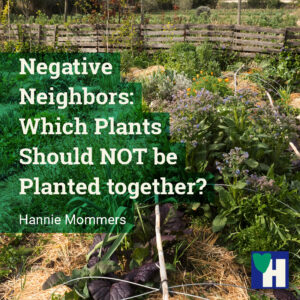
The biggest problem in traditional agriculture is monoculture. Fields full of only lettuce. Orchards with only one type of fruit.
And that while so many plants do very well next to each other. In fact, help each other stay bug-free or grow better.
Yet it is important to pay attention to which plants you put next to each other. Because just as some plants stimulate each other, there are also plants that can’t stand each other. So which plants should not be planted together?
Some of the links are affiliate links. As an affiliate associate, we earn a commission when you purchase any of the products offered through the shared links at no extra cost for you. This helps us maintain this website.
Table of contents
Which plants should not be planted together?
Companion planting is used often in organic (kitchen) gardens and fields. Most herbs and vegetables and even flowers do very well next to each other. In contrast, some combinations as for instance cucumber and radish, or carrot and tomato are not beneficial to one another.
Can you plant herbs and vegetables together?

Plants is a collective name for flowers, herbs, and vegetables. In this article, I am mainly talking about herbs and vegetables because they are edible. There are flowers however that are also very useful as neighbors such as the African marigold.
On a side note: it is said that even African marigold is edible!
In general, herbs do very well when planted between vegetables. Due to their strong smell and the essential oil, they help vegetables especially by repelling harmful insects.
Related: Organic Companion Planting for a Healthy Kitchen Garden
What should you NOT plant next to each other?
Due to the smell that the plants give off, they can strengthen or weaken each other. Some plants pass on the wrong substances through the roots.
As an example, it is better not to put carrot and tomato together. Tomatoes inhibit root growth, which makes them unsuitable neighbors. Although this list is not complete these are bad neighbors of each other:
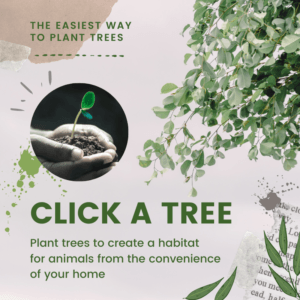
- Asparagus – – – Potato, mint, onions;
- Beans – – – Onion, garlic, fennel, leek, chives;
- Beetroot – – – Potato, corn, leek, spinach, carrot;
- Broad Bean – – – Pea, garlic, onion, fennel;
- Broccoli – – – Oregano, strawberries, tomatoes;
- Carrot – – – Mint, beetroot, tomato, anise, dill;
- Cauliflower – – – Strawberry, tomato, potato, pea;
- Celery – – – Lettuce, potato, sweet corn;
- Coriander – – – Fennel;
- Cucumber – – – Tomato, potato, radish, kohlrabi;
- Cumin – – – Fennel;
- Dill – – – Tarragon, fennel, cumin;
- Garlic – – – Pea, beans, chives, leek, rhubarb, spinach, wheat;
- Leek – – – Beetroot, peas, beans, radish;
- Lemon balm – – – Basil;
- Lettuce – – – Parsley, celery, parsnip;
- Onion – – – Cabbages, snow peas, beans, peas;
- Origanum – – – Oregano;
- Peas – – – Tomato, potato, onion, garlic, leek;
- Peppermint – – – Chamomile;
- Potato – – – Tomato, celery, beetroot, asparagus, cucumber, radish, sunflower, pumpkin, raspberries;
- Radish – – – Beetroot, onion, cabbage, kohlrabi, cucumber;
- Sage – – – Pumpkin;
- Spinach – – – Chard, beetroot, radish;
- Strawberry – – – Cucumber, broccoli, cauliflower, cabbage varieties;
- Sweet corn – – – Celery, beetroot;
- Tomato – – – Potato, pea, fennel, cabbage varieties, carrot, cauliflower, dill, rosemary;
- Zucchini – – – Cucumber, potatoes.
What plants should be together in the garden?
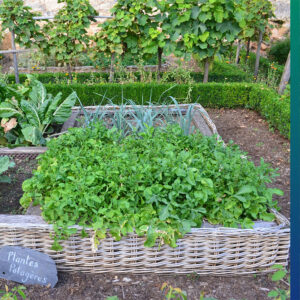
In addition to picking the right neighbors and avoiding the bad neighbors when planning the vegetable garden, there are a few more things to keep in mind.
- Put plants of the same size together;
- Pay attention to the position of the sun and put the largest plants at the back;
- Sun worshipers and shade lovers in their own place;
- Some plants like acidic ground, others calcareous soil;
- Alternate the location of certain plants every year (crop rotation);
- Separate plants that like a lot of water from those that are not so thirsty;
- Be aware of allelopathy.
Thyme, dill, oregano, and parsley should change location every year.
Related: 8 Natural Pesticides for Plants that are Useful in our Garden
Which plants benefit from each other?
- Basil + + + Parsley, oregano, thyme, cucumbers, cabbage, tomatoes;
- Beets + + + Dill, peas, garlic, cucumber, cabbages, coriander, lettuce, onions, radish, turnip, African marigold;
- Broad bean + + + Endive, cabbage, lettuce, spinach, celery;
- Cabbage varieties + + + Potatoes, endive, beets, dill, peas, chamomile, coriander, leek, spinach, tomatoes;
- Cauliflower + + + Beans, dill, oregano, celery;
- Chamomile + + + Dill, chervil, marjoram, chives;
- Cucumber + + + Beans, beets, dill, peas, fennel, cabbage, coriander, corn, leek, celery, onions;
- Dill + + + Lavender, coriander, cabbage, broccoli, kohlrabi, brussels sprouts, cauliflower, peas, carrots, turnips, lettuce;
- Endive + + + Cabbages, leeks, baguettes, tomato, fennel;
- Fennel + + + Strawberries, lettuce, onions;
- Leeks + + + Cabbages, nasturtiums, salsify, celery, tomatoes, onions, carrots;
- Lettuce + + + Strawberries, dill, cabbage, leek, radish, beetroot, broad bean, tomato, carrot;
- Mint + + + Cilantro, kale, radish;
- Onions + + + Strawberries, beets, savory, dill, chamomile, cucumber, chicory, carrots;
- Oregano + + + Basil, thyme, sage;
- Parsley + + + Tarragon, cilantro, basil, dill, chives, radish, tomato;
- Potatoes + + + African marigolds, beans, dill, peas, garlic, cabbages, mint, nasturtiums, spinach, brussels sprouts, corn;
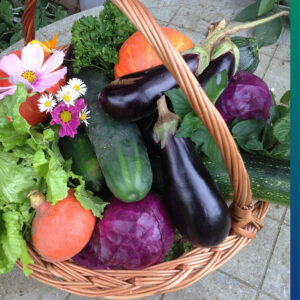
- Radish + + + Strawberry, pea, cabbage, carrot, tomato, lettuce, beetroot;
- Roots + + + Strawberry, chives, beans, dill, peas, garlic, cabbage, leek, radish, black radish, rosemary, sage, salsify, lettuce, chard, tomatoes, onions, chicory;
- Rosemary + + + Basil;
- Sage + + + Thyme, oregano, rosemary, savory;
- Spinach + + + Potatoes, strawberries, beets, cabbages, radishes, black radish, baguette beans, tomatoes;
- Strawberries + + + Garlic, parsley, leek, radish, lettuce, spinach, thyme, tomatoes, onions, carrots, African marigold;
- Swiss chard + + + Cabbages, radishes, black radish, carrots;
- Thyme + + + Rosemary, sage, oregano, coriander, tarragon;
- Tomatoes + + + Lettuce, parsley, leek, radish, black radish, spinach, onion, carrots, African marigold;
- Zucchini + + + Corn, nasturtiums, lettuce, baguette beans, onions.
Basil protects its neighbors from whiteflies and mildew. Insects such as cabbage loopers and cabbage worms are discouraged by dill. African marigold repels various pests such as nematodes, whiteflies, and ants. The smell of onion drives away the carrot fly.
Related: Grow your Own Herbs Indoors or Outside for Quality Herbal Tea
Beneficial insects
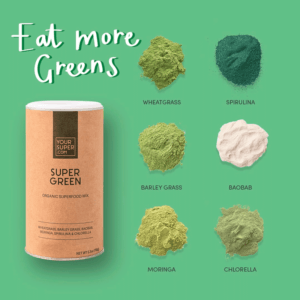
In addition to plants that help each other, there are also beneficial insects such as bees and ladybugs. Bees provide much-needed fertilization and ladybugs love lice.
Bees like single flowers because they can barely reach the pollen from compound flowers. Try to have flowering plants in your garden all year round to provide the bees with enough food.
Fruit trees bloom at different times. In the area where Tom and I live, the almond trees are already blooming in February.
The different types of berries bloom in April and May. During the summer all kinds of herbs are in bloom. Help the bees with an insect hotel!
Negative neighbors, positive neighbors
Don’t you think – as I do – it’s fascinating how plants can influence each other? Once you dive into this matter you’re bound to discover lots of great knowledge.
In this article, I mainly talked about herbs and vegetables, yet fruit trees and flowers are great to have in your garden as well. Both for their attraction to bees as for harvest or decoration.
Do you know of more plants that either go very well together or not at all? Tell us in the comment box below.

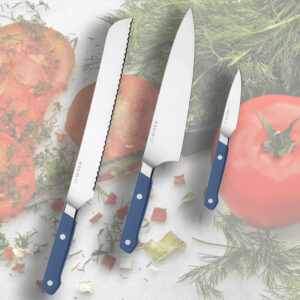
A very interesting article. Thank you! I noticed that the only place rhubarb is mentioned is to NOT plant it near garlic. Do you know of any beneficial plants to go with rhubarb?
Hi Jacquie, thanks for the compliment! No other companion plants are mentioned because rhubarb goes well with almost any neighbor. Some say strawberries like rhubarb because of the shade but I guess that is not what you mean. You want to know which ones are beneficial to rhubarb, not the other way around. 😉
Are you growing rhubarb? I would love it but our garden, at least the vegetable part, is too small! 🙂 Thanks for your comment and take care.